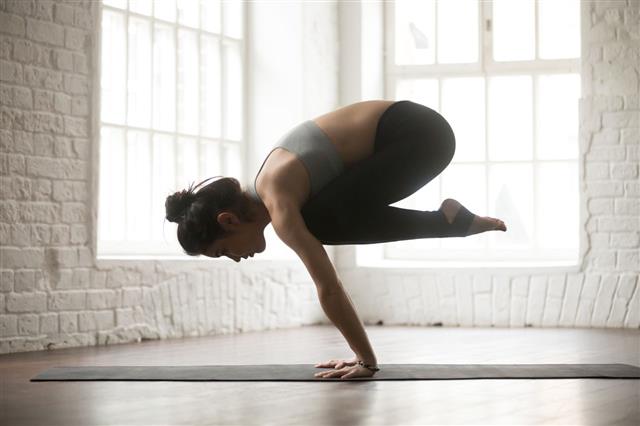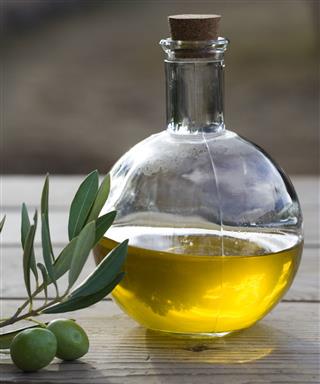
Usually, hormonal imbalance leads to cyclical mastalgia or premenstrual breast tenderness. While providing information on possible causes of cyclical mastalgia, this HerHaleness article also provides information on how to cope with it.
Breast tenderness can be described as the pain or uncomfortable sensation felt on being touched. If it occurs before periods, it may be accompanied with soreness and swelling. Breast tenderness before period is considered to be normal for a certain period and extent. It generally goes away when the menstruation ends. Breast pain that comes and goes with monthly periods is referred to as cyclic mastalgia. The pain that does not follow any pattern, and remains unchanged during a menstrual cycle is referred to as noncyclic mastalgia.
Breast Tenderness: An Overview
Cyclic mastalgia is the most common type of breast pain, and there is nothing to worry about it. A woman usually experiences mild pain in both the breasts. Usually, she feels the pain in the upper, outer area of her breasts. However, the heaviness or soreness may radiate to the armpit, back, and arm. In some women, the symptoms are more severe, and can affect the quality of their life. Usually younger women experience cyclic breast pain and discomfort. However, women who are undergoing hormone replacement therapy after menopause may experience throbbing, stabbing, or burning pain in breasts. If you happen to experience tenderness in your breasts quite often before the start of periods, you need to have some knowledge about its causes.
What Causes Breast Tenderness Before Period?
- The main reason behind tender breasts before period is the hormonal changes. The hormones involved are mainly the reproductive hormones, estrogen and progesterone. During the menstrual cycle, the levels of these two hormones keep fluctuating. Women may experience mastalgia (or mastodynia) in the luteal phase of the menstrual cycle, usually one-two weeks before the period.
- Sore breasts and nipples are among the most common symptoms of pre-menstrual syndrome (PMS). They mainly occur due to excessive water retention after ovulation. Accumulation of water in the breast tissues results in stretching of the skin. This, in turn, puts the other tissues under tension.
- The levels of estrogen may rise abnormally during perimenopause. The condition is known as estrogen dominance. Breasts can become so tender and sore that one cannot stand even a slight touch.
- If you are a middle-aged woman, onset of perimenopause can be one of the possible causes for breast tenderness.
- Having beverages like coffee and colas can aggravate tenderness in breast (though not proved). This is because they contain methylxanthine, which prompts dilation of the blood vessels, and leads to breast tissue distention.
- Some other common causes of premenstrual breast tenderness include fibrocystic breast changes (normal changes in the breast tissue, lumps and bumps in the tissue) and use of oral contraceptive pills (they bring about hormonal changes).
- Soreness and swelling in the breasts can be an early sign of pregnancy. Considering this as a PMS sign, the woman might think that she will be having her period soon. However, she might be pregnant and would miss her period.
- Usually, breast pain that intensifies and goes away with cyclical hormonal changes cannot be a symptom of breast cancer. A lump in a breast, a change in the size, feel, or shape of the breast, or fluid oozing from the nipple are some of the main symptoms of breast cancer.
How to Cope with Breast Tenderness
Timely diagnosis of the underlying causes and effective treatment of the same will relieve breast tenderness. The medical treatment will take its own time to cure the underlying disease. In case, the doctor says you are suffering from normal premenstrual syndrome, you can take several measures to ease your condition.
- Do not lead a sedentary life. Try to be physically active. At the minimum, go for a walk for about a 30 minutes daily.
- Use good quality support bras, particularly on the days of breast tenderness. They give full support to your breasts. An alternative is to pad your bra with lamb’s wool from inside.
- You may take a non-prescription pain killer to relieve the pain.
- Apply either cold or hot compress, whichever is suitable, on the tender breasts. This will provide you with some ease and comfort.
- Follow a diet which is low in fat and a little high in fiber. This will prevent estrogen from overstimulating the tissues of breasts. It will help maintain normal levels of estrogen. Lowering the consumption of salt can help lower PMS symptoms.
- Usually the cause of breast soreness before period is changes in the hormonal levels. However, you should never rely on your own assessment. If you have a family history of breast cancer, visit a medical practitioner as early as possible, and get yourself well examined for it. To rule out the possibility of breast cancer, you may have to undergo certain tests. When the medical report will show that your symptoms are benign, you will feel relaxed and stress-free. It has been noticed that stress worsens cyclical breast pain.
- Relaxation therapies like aromatherapy, yoga, pranayama, meditation, etc., can help lower the stress in your life.
- Ground flaxseed works great for premenstrual breast pain. You may buy the pre-ground seed, and sprinkle it over various dishes. Cooking may destroy the nutrients.
- Certain vitamins and minerals, for example, vitamin E and magnesium, play an important role in lowering premenstrual breast tenderness. According to The U.S. Department of Health and Human Services Office, a woman should consume 400 IU of magnesium and 400 IU of vitamin E every day. This can help alleviate PMS symptoms. Oat bran, bananas, avocados, brown rice, spinach, peanuts, hazelnuts, olive oil, etc., are some foods that are good sources of magnesium and vitamin E.
Following the home treatment measures is expected to ease your state. However, if the tenderness of breasts is unbearable, and doesn’t seem to go away, pay a visit to a doctor for necessary medical intervention.
Disclaimer: The information provided in this article is solely for educating the reader. It is not intended to be a substitute for the advice of a medical expert.






